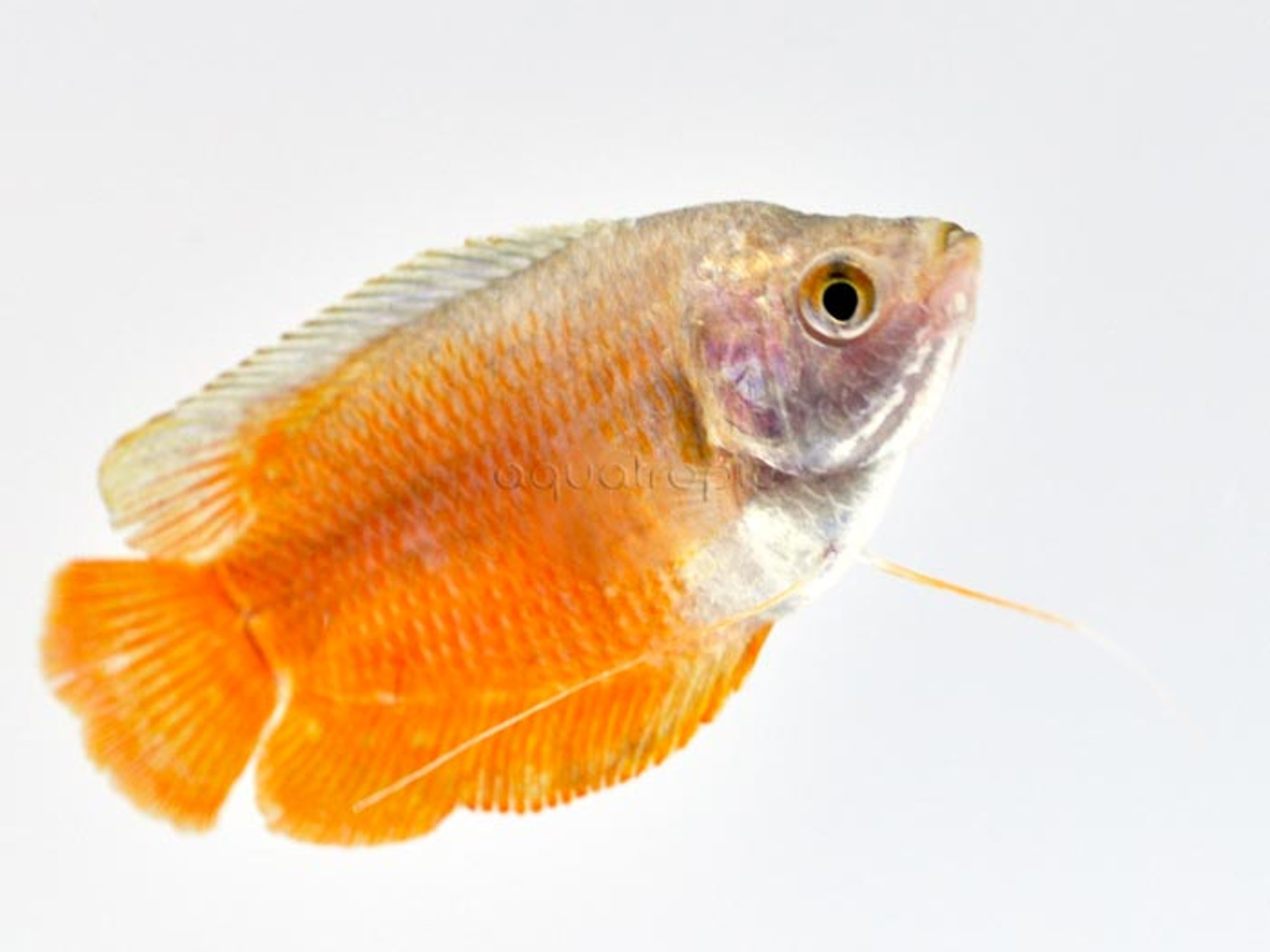The Dwarf Gourami(Trichogaster lalius)

It’s often said that marine fishes are more colorful than their freshwater counterparts, but clearly the Dwarf Gourami missed the memo on that. This resplendently colored species is vibrant enough in the wild, with its series of blue and red stripes, and generations of captive breeding for the aquarium trade have resulted in several more unique morphs, such as the allred Flame Dwarf Gourami and the jaw-dropping Powder Blue Dwarf Gourami.
Trichogaster lalius (still seen quite often under an older name, Colisa lalia) is known only from portions of Pakistan, Northern India and Bangladesh, where it occurs in slower moving bodies of water, such as ponds and swamps, that are heavily vegetated. This is important to keep in mind when adding this fish to an aquarium, as heavy water flow and a lack of plants or decorations will result in an unhappy gourami.
Reaching a maximum size of under three inches, this relatively placid species is best housed with peaceful tankmates. Rasboras are a good option, as are many of the smaller tetras from South America. Smaller rainbowfishes and some of the more peaceful cichlids would also work well. However, male Dwarf Gouramis can get unusually aggressive towards certain fishes with showy fins, such as male Guppies or Bettas. As an omnivore, most any type of food will be eagerly eaten, but frozen bloodworms and floating dry foods are ideal.
In smaller fish tanks, it’s best to house themales of T. lalius by themselves or with oneor more females. This species shows strongsexual dimorphism, with females beingsmaller and a less-colorful silvery hue. If properly cared for, pairs will often spawn in captivity, especially if there are live plants in the tank. Like the closely related bettas, male Dwarf Gouramis will construct a bubble nest, incorporating bits of plant material to solidify it. After mating, the eggs float into the bubbles and are tended by the males. The juveniles are tiny and require some effort to raise to adulthood.